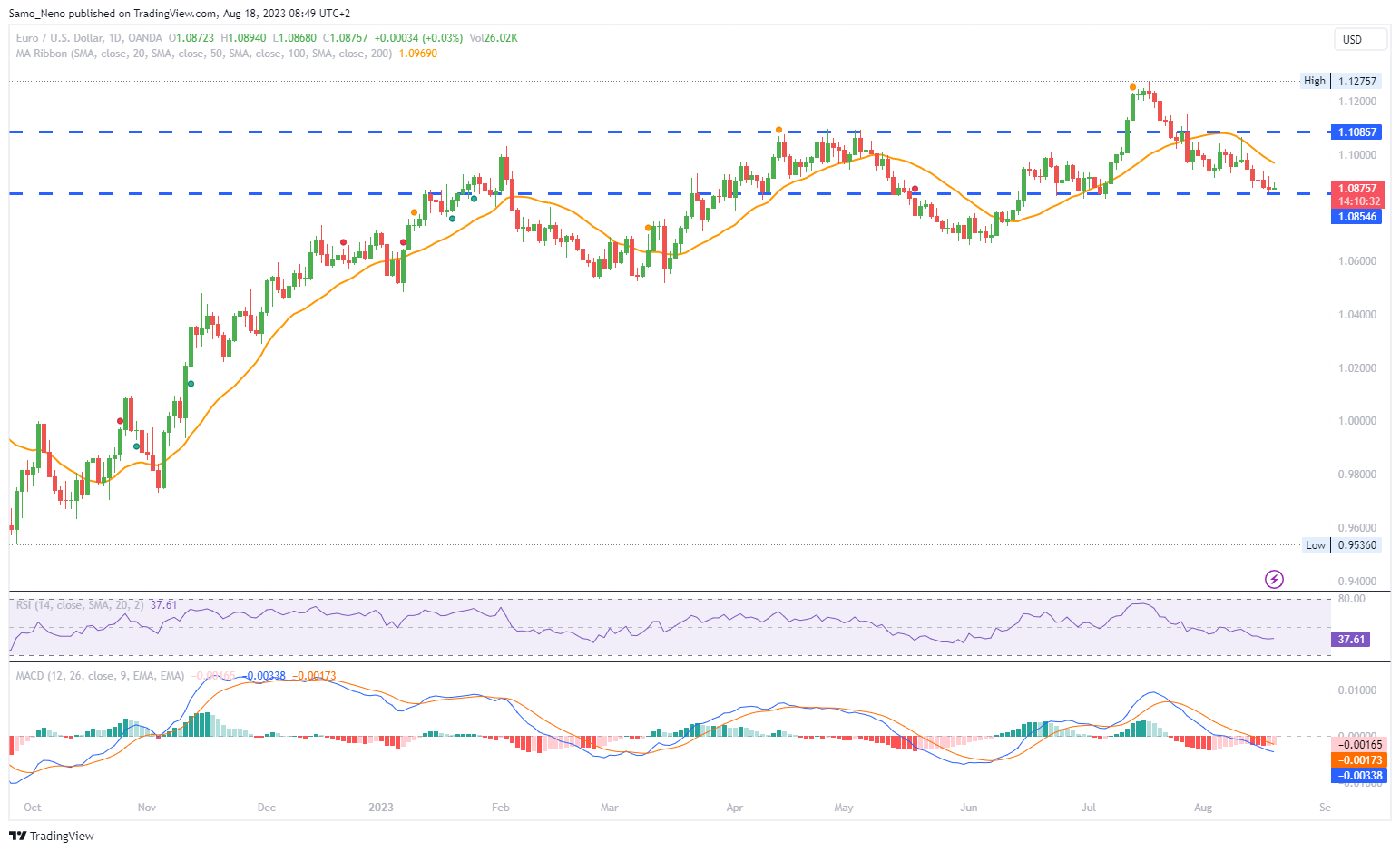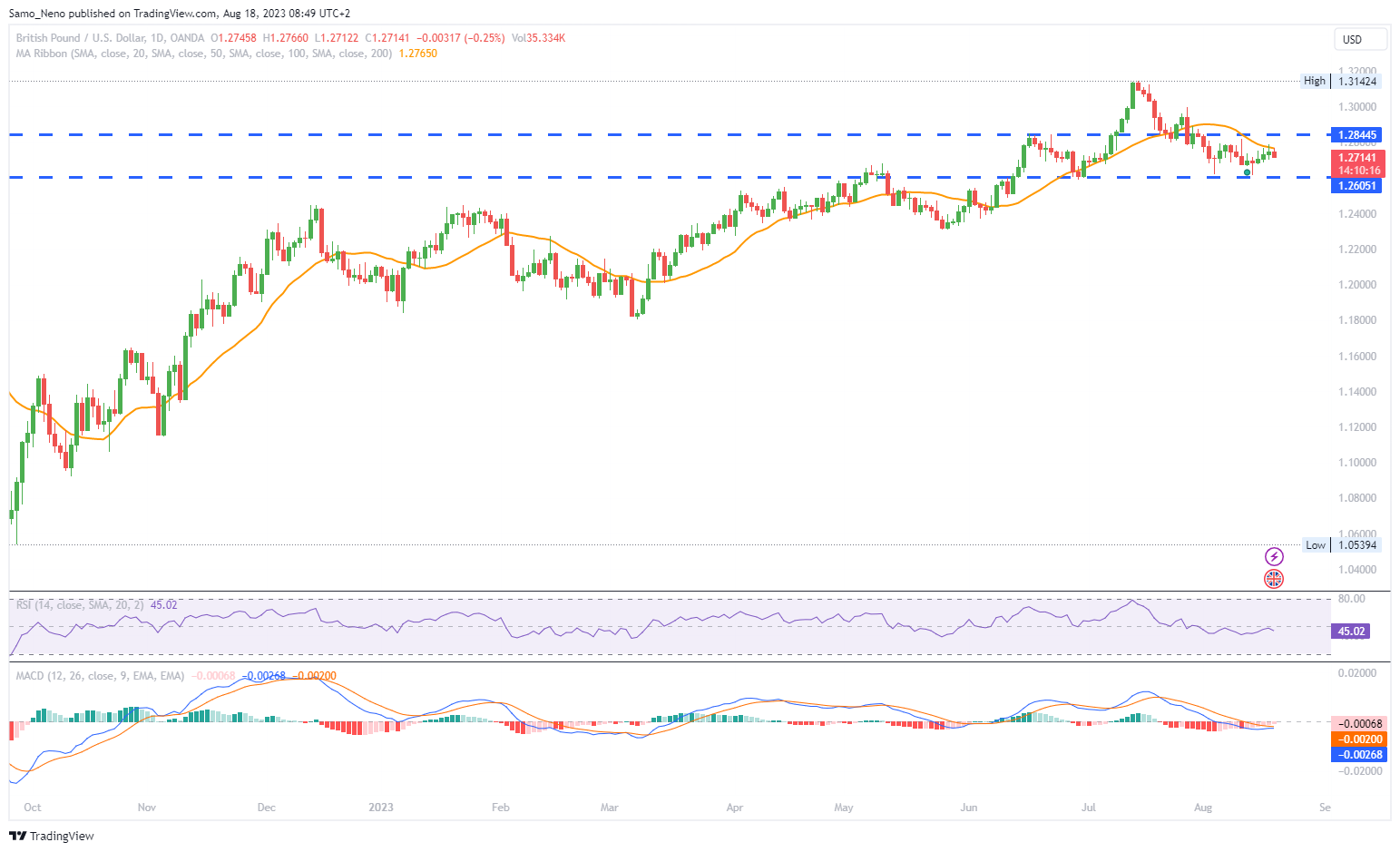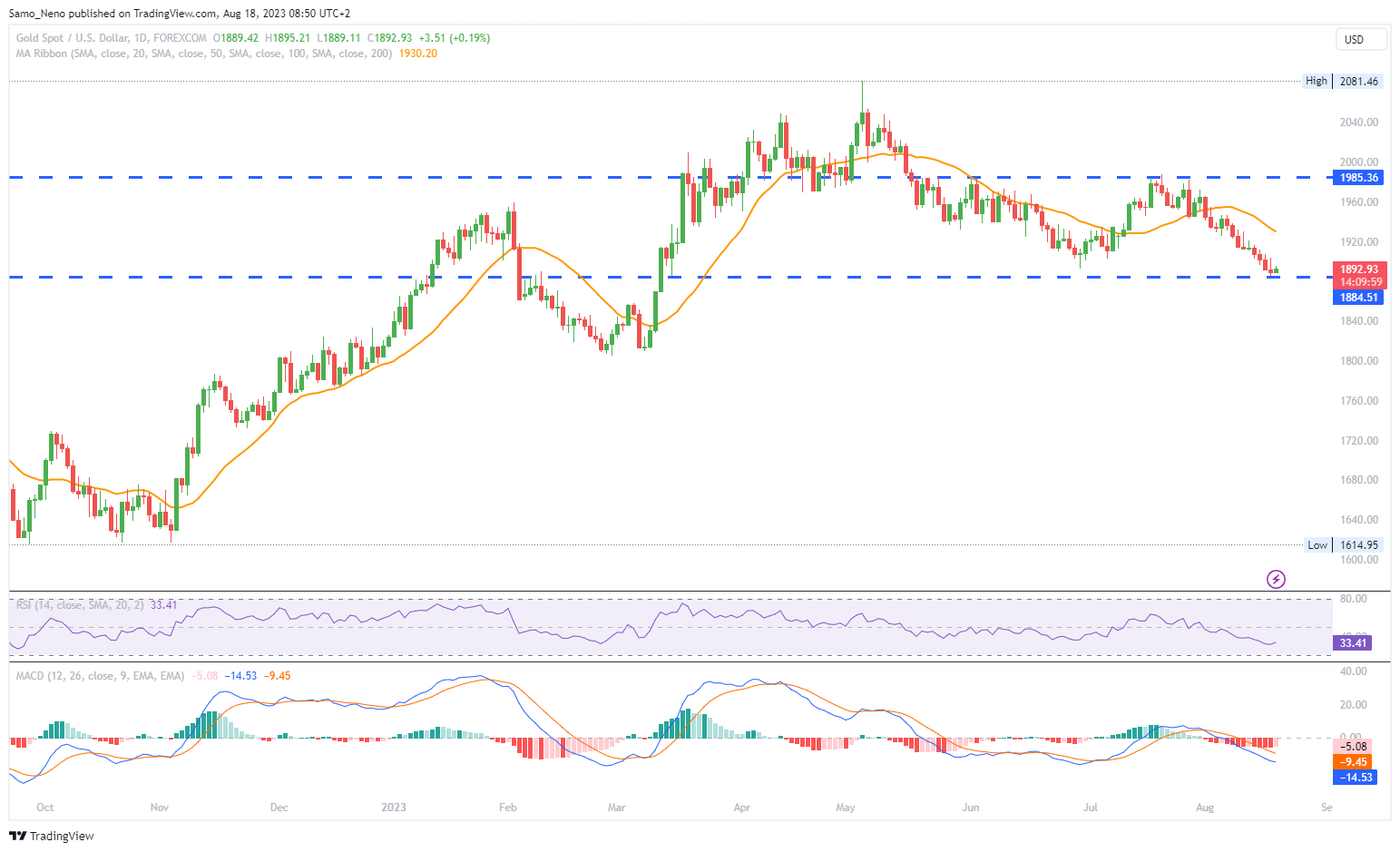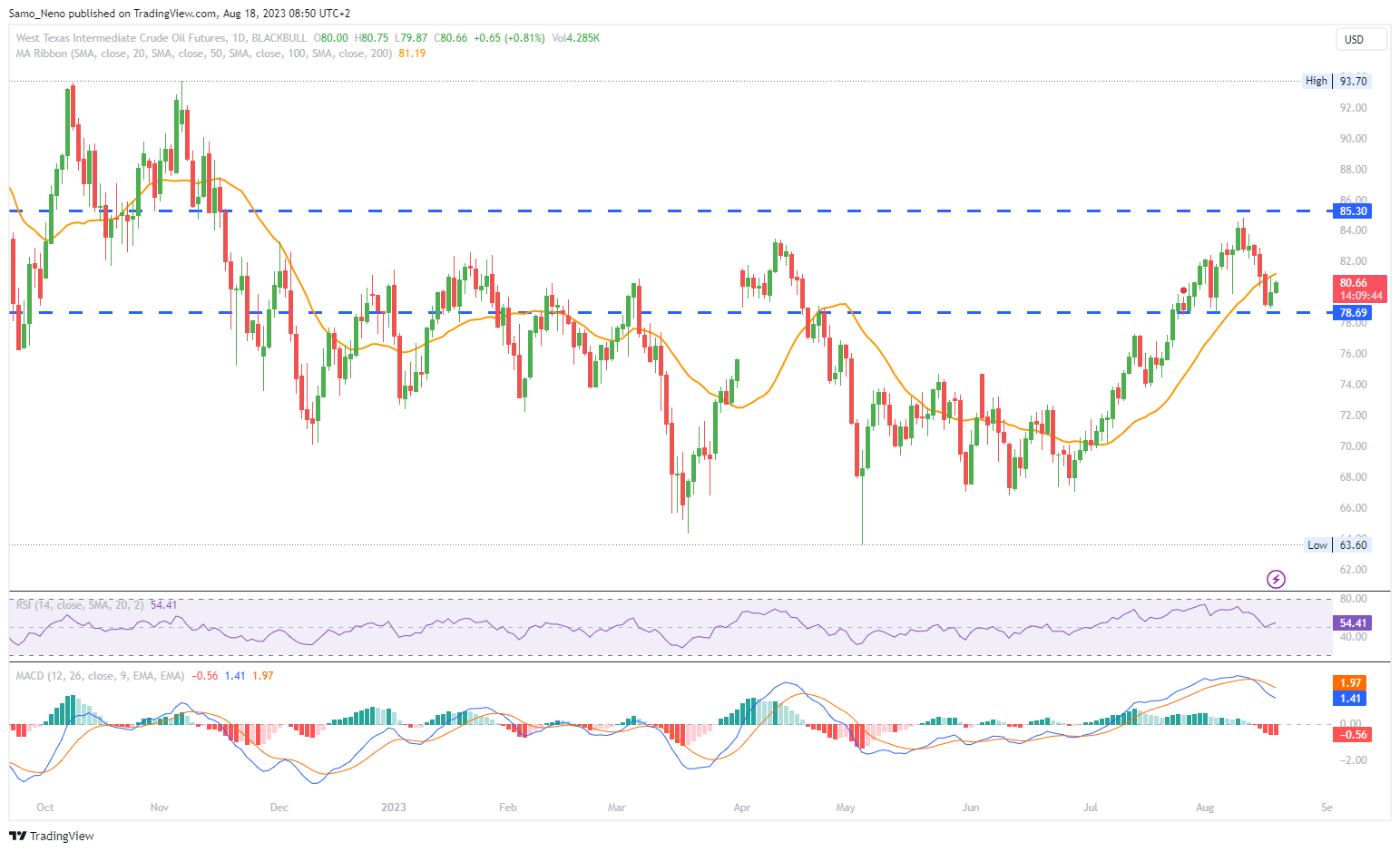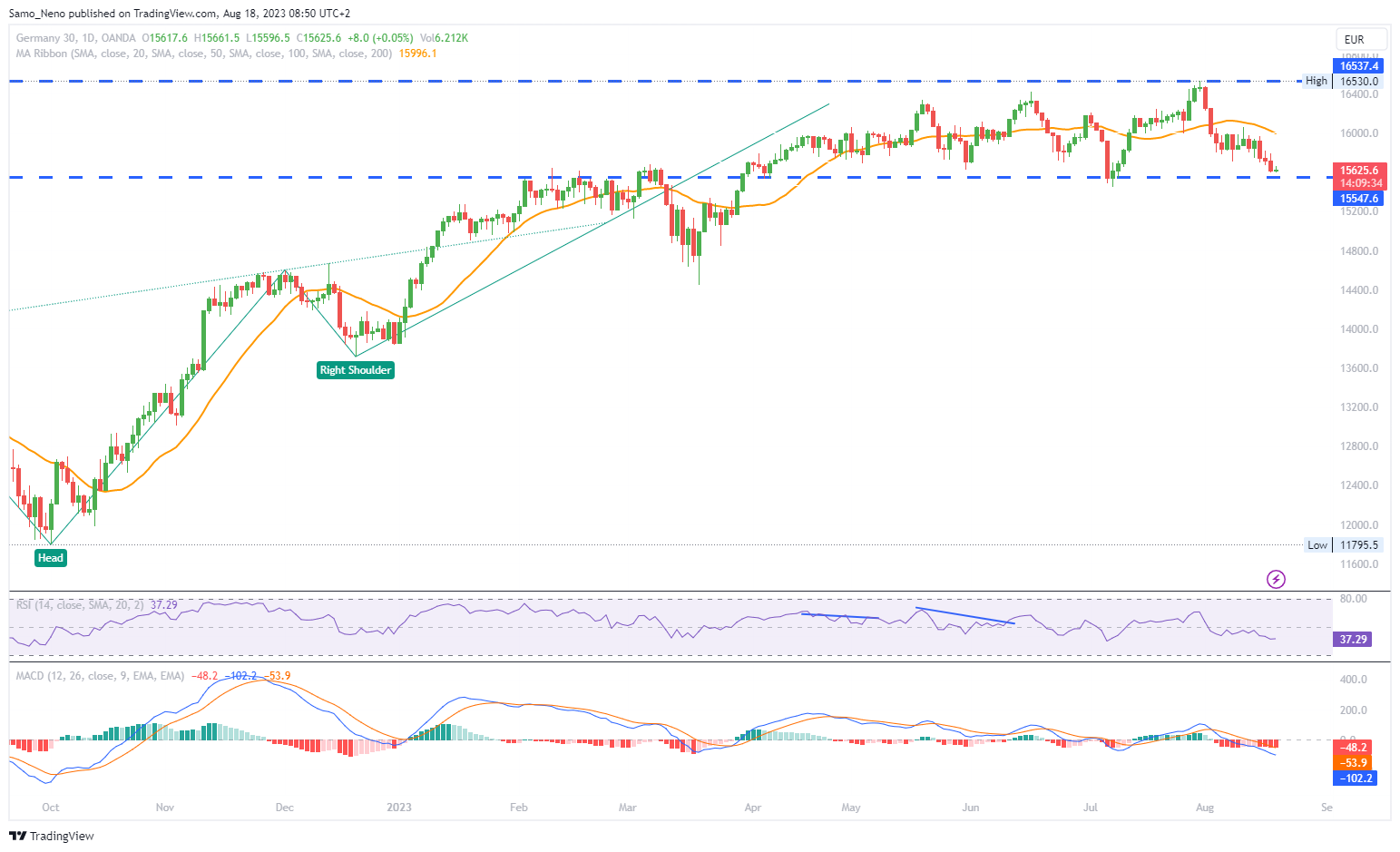EURUSD
- The EUR/USD pair managed to edge higher during the Asian trading session on Friday. This movement marked a turnaround from its previous five-day losing streak, during which the pair had reached a six-week low around the 1.0855 level.
- The Euro initially experienced a spike in value at the start of the American trading session. However, this initial gain was subsequently reversed, leading to a decline.
- The narrowing yield differential between US and German bonds exerted downward pressure on the EUR/USD pair.
- The analysis pointed out that a decline in equity prices contributed to increased demand for the US Dollar. The Dollar tends to be favored as a safe-haven asset during times of market uncertainty. The assessment underlined that any potential rebounds in the EUR/USD pair could face limitations until there is a significant shift in market sentiment. The pair's movements were anticipated to remain subdued as long as the current sentiment persisted.
- Eurostat is scheduled to release the final reading of the Consumer Price Index for July. This data release was not expected to bring any surprises, with the annual inflation rate projected to remain at 5.3%. Additionally, Construction Output data for June will also be reported.
Closing statement: The EUR/USD pair managed to recover slightly from a six-week low during the Asian trading session on Friday. Although the Euro experienced an initial spike during the American session, this gain was subsequently reversed. The narrowing yield differential between US and German bonds and a decline in equity prices weighed on the Euro, boosting demand for the US Dollar. Rebounds in the EUR/USD pair were expected to be restricted until a notable change in market sentiment occurred. Upcoming data releases included Eurostat's final reading of the Consumer Price Index for July and the report on Construction Output for June.
GBPUSD
- The analysis noted that the GBP/USD pair struggled to gain significant momentum and remained within a narrow trading range below the 1.2750 level.
- The UK Retail Sales data for July came in below expectations, with a decline of -1.2% on a monthly basis. This data release likely contributed to the pair's struggle to gain traction.
- The US Dollar's strength due to risk aversion and the hawkish undertone in the minutes of the Federal Reserve's July meeting were identified as factors affecting GBP/USD. These elements supported the Dollar's position in the market.
- Despite the influence of USD strength, the analysis pointed out that the losses for GBP/USD remained limited. This was attributed to inflation data from the UK, which had previously provided support to Pound Sterling, helping it maintain its position.
- The fundamental story continued to favor the US Dollar, driven by positive US economic data and an overall sense of market risk aversion.
- UK's FTSE 100 Index was trading slightly higher early on Thursday. In the US, stock index futures were gaining between 0.2% and 0.3%. Depending on the direction taken by major equity indexes in the US – if they open in the green and continue to rise – the analysis suggested that GBP/USD could regain its traction.
| SMA (20) | Slightly Falling |
|
| RSI (14) | Neutral | |
| MACD (12, 26, 9) | Neutral |
Closing statement: The GBP/USD pair encountered difficulty in gaining substantial momentum, maintaining a narrow trading range below 1.2750. This situation was influenced by factors such as disappointing UK Retail Sales data for July and the strength of the US Dollar due to risk aversion and a hawkish tone from the Federal Reserve. Despite these influences, GBP/USD's losses remained limited, partly thanks to previous UK inflation data supporting Pound Sterling. The broader market context, including the positive US economic data and general risk aversion, continued to Favor the US Dollar. The UK's FTSE 100 Index and US stock index futures were discussed in relation to their potential impact on GBP/USD movement. Depending on the equity market conditions, there was the possibility that GBP/USD could regain its traction.
GOLD
- The analysis pointed out that gold prices experienced a slight increase on Friday, recovering from a five-month low. This recovery was attributed to a decrease in the dollar due to some profit-taking activities.
- Despite the recovery, concerns over higher U.S. interest rates continued to put pressure on the metal markets. This pressure was evident in gold prices, which were on track for a fourth consecutive week of losses.
- The analysis emphasized that the strong labor market data and hawkish signals from the Federal Reserve (Fed) contributed to the ongoing pressure on gold prices. These factors led market participants to position themselves for the expectation of higher U.S. interest rates.
- The dollar was set to gain by 0.5% for the week. This gain was attributed to robust U.S. economic readings and hawkish signals from the minutes of the Fed's July meeting. These developments fueled expectations that U.S. interest rates would remain at higher levels for an extended period.
- The anticipation surrounding the Jackson Hole Symposium scheduled for the following week is present. This anticipation was cited as a factor influencing market positioning, which favored the dollar. As a result, investors remained cautious about the state of metal markets.
- Another factor is contributing to the pressure on gold – a spike in U.S. Treasury yields. Specifically, the 10-year rate surged to levels not seen since the 2008 financial crisis.
| SMA (20) | Falling |
|
|
|
| RSI (14) | Slightly Rising |
|
||
| MACD (12, 26, 9) | Falling |
|
|
Closing statement: Gold prices saw a slight recovery from a five-month low on Friday, partly due to profit-taking activities that affected the dollar. However, concerns over higher U.S. interest rates continued to impact the metal markets, with gold prices heading for a fourth consecutive week of losses. This pressure was driven by robust labour market data, hawkish signals from the Fed's July meeting minutes, and expectations of a prolonged period of higher U.S. interest rates. The dollar also gained during the week, with a 0.5% increase, further fuelled by strong economic indicators and the Fed's hawkish stance. Anticipation of the Jackson Hole Symposium and a surge in U.S. Treasury yields were additional factors contributing to gold's pressure.
CRUDE OIL
- Crude oil prices experienced a rise in Asian trade on Friday, attempting to rebound after a seven-week winning streak. However, this streak was set to be broken due to concerns over a potential Chinese economic slowdown and the impact of rising U.S. interest rates on demand.
- The report pointed out that crude prices gained approximately $1 on Thursday, recovering from a two-week low. This increase was triggered by China's central bank's announcement that it would maintain liquidity in the markets to support economic growth.
- The gains continued on Friday, with markets awaiting more stimulus measures from China in the upcoming days. These measures were anticipated as the post-COVID economic recovery in China faced challenges, leading to concerns about economic growth slowing down.
- An easing dollar, which retreated from two-month highs, provided some relief to oil prices on Friday. A weaker dollar generally supports commodities, including oil.
- Crude oil prices had enjoyed a seven-week rally prior to this reversal. This rally was attributed to significant supply cuts by major oil producers such as Saudi Arabia and Russia. These cuts indicated a potential tightening of oil supplies for the rest of the year.
| SMA (20) | Rising |
|
| |
| RSI (14) | Slightly Rising |
|
||
| MACD (12, 26, 9) | Falling |
|
|
Closing statement: Crude oil prices rose slightly in Asian trade on Friday, attempting to rebound after a seven-week winning streak. However, this streak was expected to be broken due to concerns over a potential Chinese economic slowdown and the impact of rising U.S. interest rates on oil demand. The previous day's gains were fuelled by China's central bank's assurance of maintaining market liquidity. Market participants were waiting for additional stimulus measures from China to address the economic challenges that had arisen in the post-COVID recovery phase. The temporary retreat of the dollar from its recent highs also offered some relief to oil prices. The rally in oil prices over the past seven weeks was driven by supply cuts from major producers like Saudi Arabia and Russia, pointing to a potential tightening of oil supplies for the rest of the year.
DAX
- Germany stocks concluded lower after the previous day's trading session, with losses seen in the Construction, Software, and Technology sectors leading to a decline in shares.
- The DAX experienced a drop of 0.71% on Thursday, reversing the gains recorded on Wednesday. The index closed at around 15,600. This decline was attributed to ongoing global tensions that were influencing market sentiment.
- DAX stocks were navigating a bearish landscape, mainly driven by China's economic downturn and the looming decisions of the Federal Reserve that had implications for the broader DAX market.
- A mention was made that Eurozone trade data released early in the European session the previous day failed to impress. Despite the trade balance improving from a €0.3 billion deficit to a €23.0 billion surplus in June, this positive development did not significantly impact market sentiment.
- The upcoming focus would be on the finalized Eurozone inflation figures for July. These figures were anticipated to draw investor interest. The investor focus is returning to central bank monetary policy, suggesting that any upward revision to preliminary inflation figures could exert pressure on the DAX index. Preliminary data had indicated a softening of the Eurozone annual inflation rate from 5.5% to 5.3% in July.
| SMA (20) | Slightly Falling |
|
| RSI (14) | Neutral | |
| MACD (12, 26, 9) | Slightly Falling |
|
Closing statement: Germany stocks faced a bearish session with losses primarily driven by the Construction, Software, and Technology sectors. The DAX index experienced a decline of 0.71%, reversing previous gains and closing at around 15,600 points. The bearish momentum was linked to ongoing global tensions, particularly influenced by China's economic downturn and market concerns about the Federal Reserve's upcoming decisions. Despite positive Eurozone trade data, the impact on market sentiment was limited. The upcoming focus was on the finalized Eurozone inflation figures for July. These figures were expected to draw investor attention, especially as focus shifted back to central bank monetary policy. Any upward revision to preliminary inflation figures could exert pressure on the DAX index, which had previously seen a softening of the Eurozone annual inflation rate.
